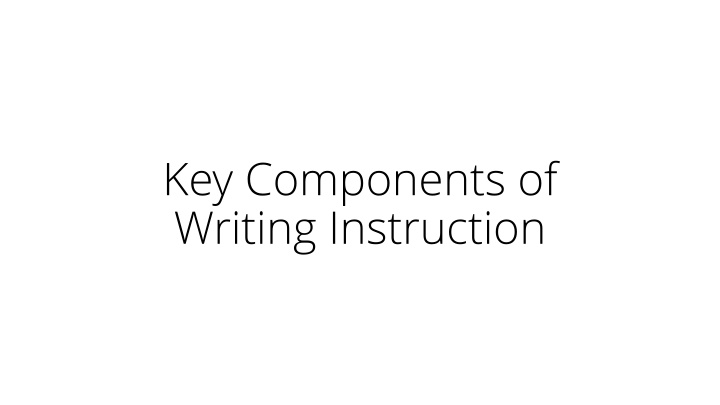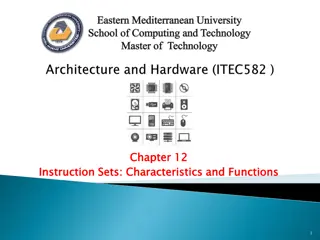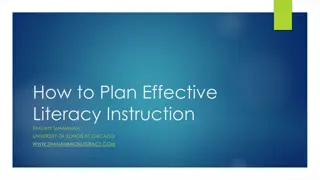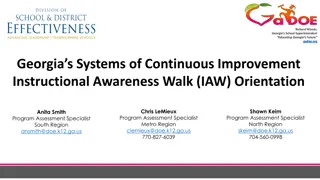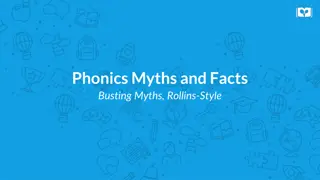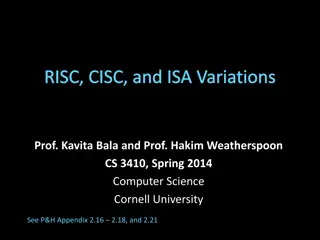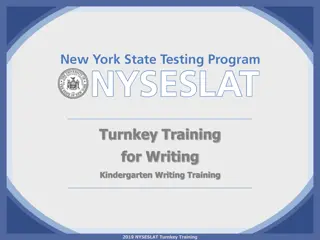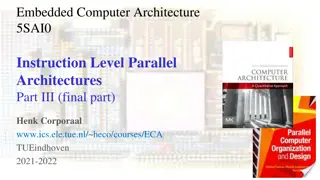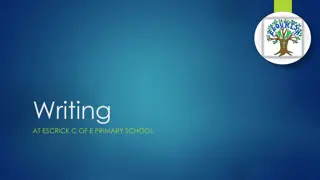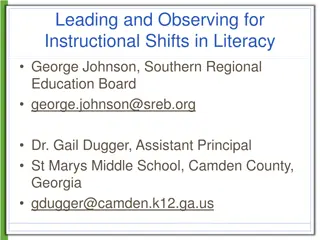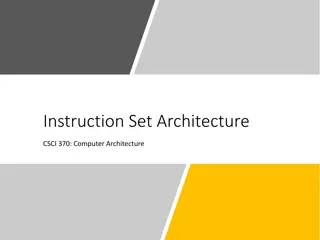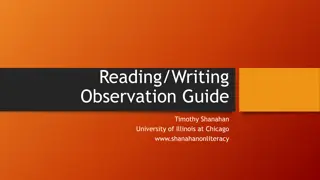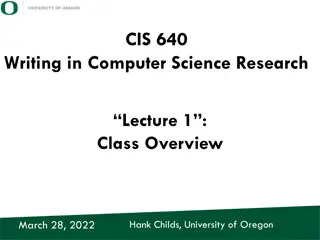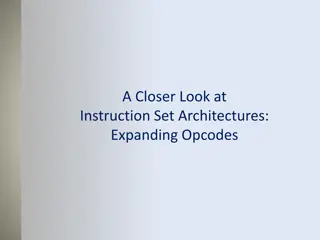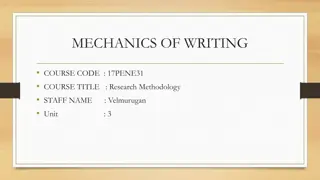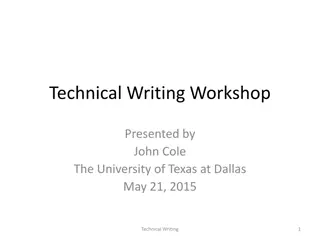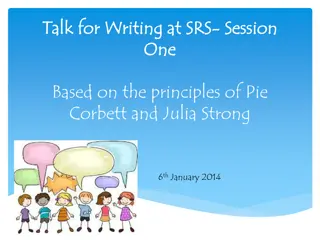Essential Components of Writing Instruction
Learn about key components of writing instruction including handwriting, word processing, spelling, sentence construction, and more. Discover effective strategies for teaching students to write fluently, spell accurately, and construct sentences with proper grammar and punctuation. Explore activities and techniques to enhance students' writing skills at different grade levels.
Download Presentation

Please find below an Image/Link to download the presentation.
The content on the website is provided AS IS for your information and personal use only. It may not be sold, licensed, or shared on other websites without obtaining consent from the author.If you encounter any issues during the download, it is possible that the publisher has removed the file from their server.
You are allowed to download the files provided on this website for personal or commercial use, subject to the condition that they are used lawfully. All files are the property of their respective owners.
The content on the website is provided AS IS for your information and personal use only. It may not be sold, licensed, or shared on other websites without obtaining consent from the author.
E N D
Presentation Transcript
Key Components of Writing Instruction
Key Components of Writing Handwriting/Word Processing Spelling Sentence Construction Writing Process Planning Drafting Evaluating/Sharing Revising/Editing
Handwriting Teach young student to hold a pencil correctly and correctly form letters. Young children may use extra strokes to form letter and should be taught the most efficient way to write letters. Because handwriting is a motor skill, it works best to practice in multiple short sessions. Students might practice a specific letter only five to eight times before moving to another activity. However, writing letters in isolation is insufficient; students also should apply their handwriting skills in sentences and in authentic writing activities. (Graham et al., 2018; Teaching Elementary School Students to Be Effective Writers )
Word processing Teach student to be fluent at word processing and typing by second grade. Student needs to know how to use word processing programs (how to launch, open a document, cut and paste, move, use spell and grammar check) and how to type. By second grade students should use word processing programs to produce and revise text
Spelling Directly teach spelling, but also connect spelling to writing instruction. Students should be encouraged to draft using invented spelling (K and 1st) and spelling by analogy (2nd grade and up) to avoid interruptions in the drafting process. Then in the editing phase students can focus on correcting their spelling using word processing tools and/or dictionaries.
Sentence Construction Students need to be directly taught sentence construction. Capitalization Punctuation Grammar Syntax Complete sentence Varying sentence structure
Activities for Teaching Sentence Structure, from Teaching Elementary School Students to Be Effective Writers Activity Description Examples How the Teacher Can Implement the Activity Sentence framing Teachers provide sentence frames to guide students sentence writing. Frames can range from simple to complex. I like ______________________________ . I like to ____________and ___________ . My ________________ is ______________. When I ____________ , I like to ______ . She didn t go to _____________________ because __________________________. 1. Develop a sentence frame for students to use. 2. Model the use of the sentence frame. 3. Have students use the sentence frame to construct their own sentences. 4. Have students share their sentences with peers and discuss their word choices. 5. Slowly fade the use of the sentence frame during instruction until students can write sentences independently. Sentence expanding The teacher provides a short sentence. Students expand the sentence using different parts of speech. 1. Introduce a short sentence. 2. Model how to add to the sentence using different parts of speech and demonstrate appropriate capitalization and punctuation as the sentence is expanded. 3. 3. Have students provide suggestions for different parts of speech (e.g., subjects and predicates) to add to the short sentences. 4. 4. Have students work independently or in pairs to expand a sentence. 5. 5. Encourage students to share their expanded sentences in small groups, providing feedback to their peers. The dog napped. The brown dog napped. The brown dog napped on the couch. The lazy, brown dog napped on the couch. The lazy, brown dog napped on the couch while I read a book. Sentence combining Students combine two or more sentences into one simple, compound, complex, or com- pound-complex sentence. 1. Choose sentences for combining. 2. Model how to combine the sentences using several examples; with older students, introduce moving, deleting, and adding words or parts. 3. Have students rate the quality of the new sentence, provide alternatives to the new sentence, and discuss which sentences sound better and why. 4. Encourage students to work in pairs to combine sentences, creating several new possibilities and rating the quality of their new sentences. My dog is brown. My dog is big. My brown dog is big.
The Writing Process The Writing Process figure Taken from Teaching Secondary Students to Write Effectively
Teach Writing Strategies Using Model-Practice-Reflect Cycle figure taken from Teaching Secondary Students to Write Effectively
Writing Strategies-Elementary, from Teaching Secondary Students to Write Effectively Component of the Writing Process Writing Strategy How Students Can Use the Strategy Grade Range Pick ideas (i.e., decide what to write about). Organize their notes (i.e., brainstorm and organize possible writing ideas into a writing plan). Write and say more (i.e., continue to modify the plan while writing). Brainstorm/generate ideas for their paper. Review their ideas and place a number by what will go first, second, third, and so on. Brainstorm/generate ideas for their paper. Decide which are main ideas and which are supporting ideas. Create an outline that shows the order of the main ideas and the supporting details for each main idea. Select a sentence, paragraph, or text excerpt and imitate the author s form (see Recommendation 2b, examples 2 and 3). Try out sentences orally before writing them on paper. Try multiple sentences and choose the best one. Use transition words to develop different sentence structures. Practice writing good topic sentences. In pairs, listen and read along as the author reads aloud. Share feedback with their writing partner, starting with what they liked. POW 1 6 Planning 1 2 Ordering ideas/outlining 3 6 Imitation 1 6 Drafting Sentence generation 3 6 Peer sharing35 2 6 Sharing Author s Chair Sit in a special chair in front of peers and read their writing (see Recommendation 4, example 6, for more detail). Reread and ask these questions: Are the ideas clear? Is there a clear beginning, middle, and end? Does the writing connect with the reader? Are sentence types varied? Self-assess and ask these questions, either out loud or internally: Did I meet the goals I developed for my writing? If not, what changes should I make to meet my goals? Did I correctly use strategies that were appropriate for this task? If not, what should I change? Record their answers to self-assessment questions on a chart or teacher-provided questionnaire in order to track their progress toward writing goals and strategy use. Congratulate themselves, and inform their teacher, when they meet their goals. Place a question mark (?) by anything they do not understand in their writing partner s paper. Place a carat (^) anywhere it would be useful to have the author include more information. Ask the COPS editing questions: Did I Capitalize the first word in sentences and proper names? How is the Overall appearance of my paper? Did I use commas and end-of-sentence Punctuation K 6 Self-evaluating 2 6 Evaluating Self-monitoring 3 6 Peer revising36 2 6 Revising and editing COPS (editing)
Writing Strategies-Secondary Several strategies for teaching writing at the secondary level can be found in the practice guide Teaching Secondary Students to Write Effectively on pages 9-14 Jigsaw activity: Instructor chooses 4-5 of the strategies and puts students in jigsaw groups of 4-5 and numbers the students off. Graphic organizer for the activity is on the next slide. Instructor provides the following directions: 1) Read about the strategy assigned and do some additional research online to become an expert. Fill out the graphic organizer, 2) Go to your expert group and discuss strategy with your group-highlighting main elements and what genre of writing it will work well with, 3) Go to your back-jigsaw group to share each strategy and complete the graphic organizer.
Example Expert and Jigsaw Group My Expert Group My Jigsaw Group I am an Expert on ________ Page _______ Topics covered in my jigsaw group: _______________________________________ Two things I learned from my research I want to share: 1. Two things I learned from my jigsaw group 1. 2. 2. Two things I learned from my expert discussion group: 1. Two questions I still have after this activity: 1. 2. 2.
